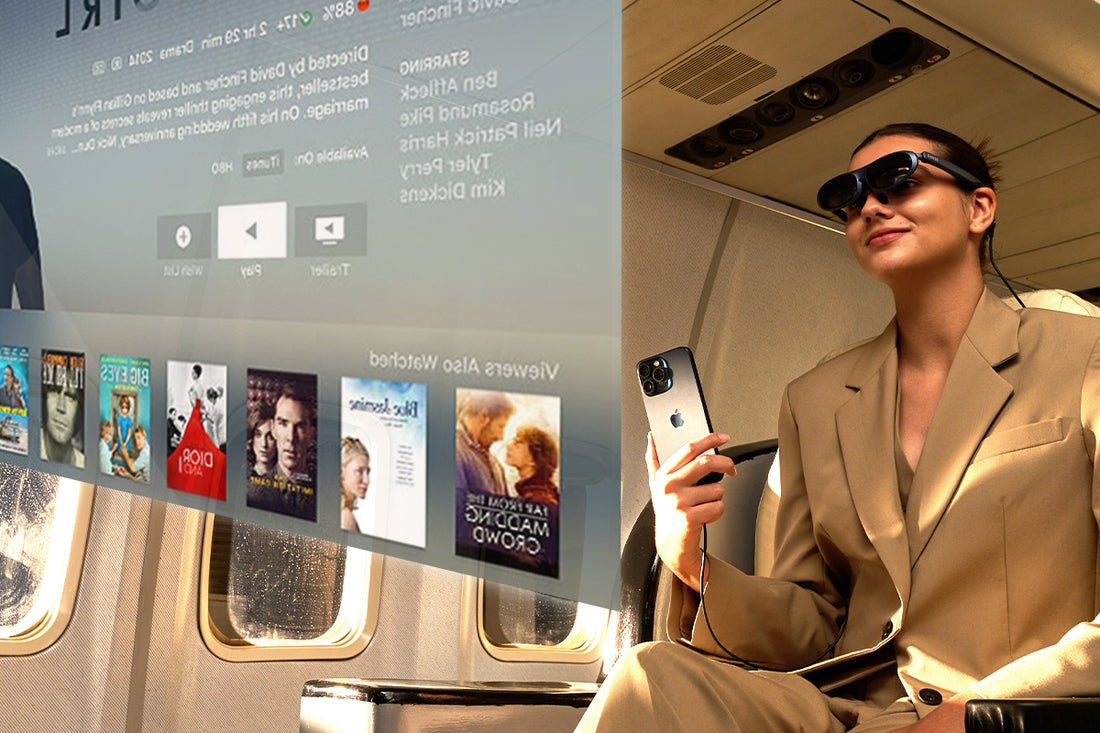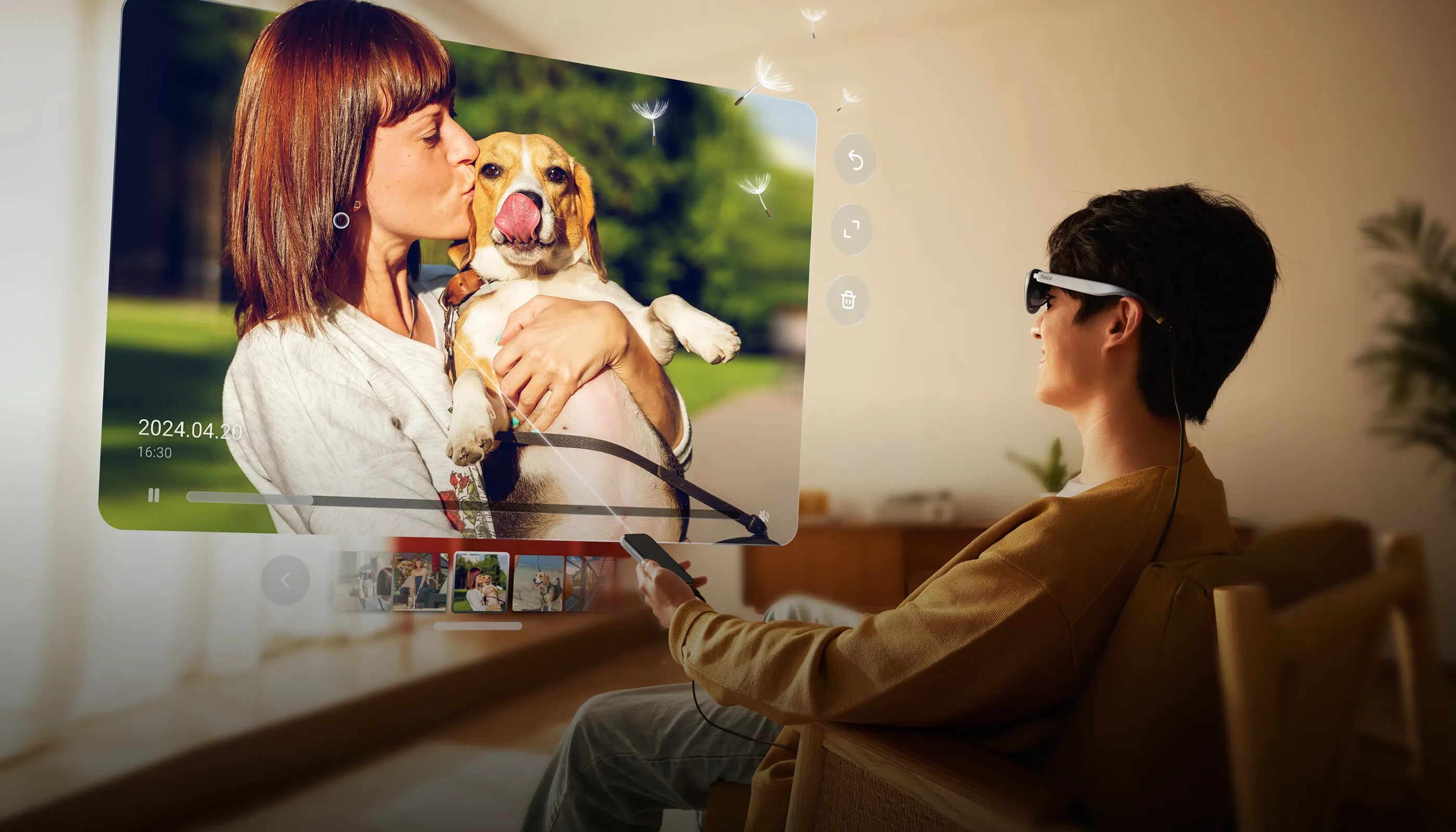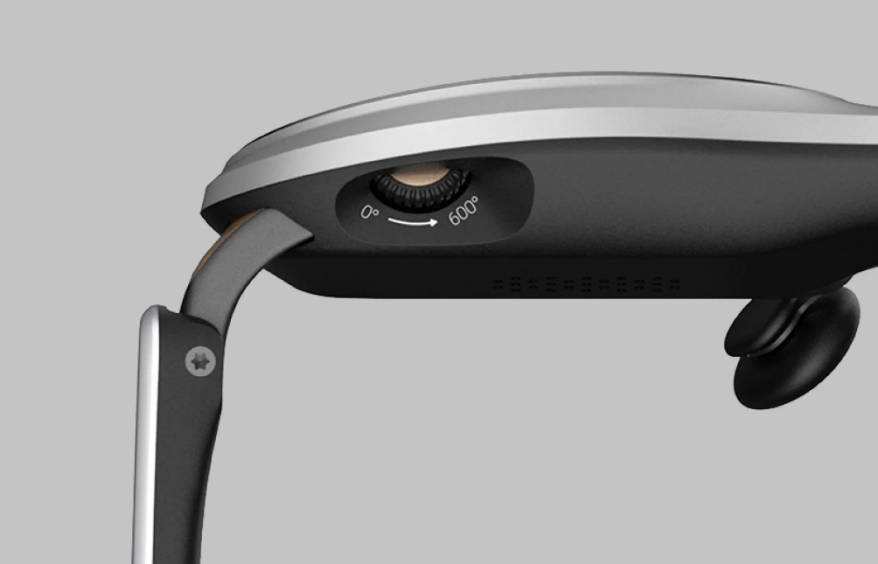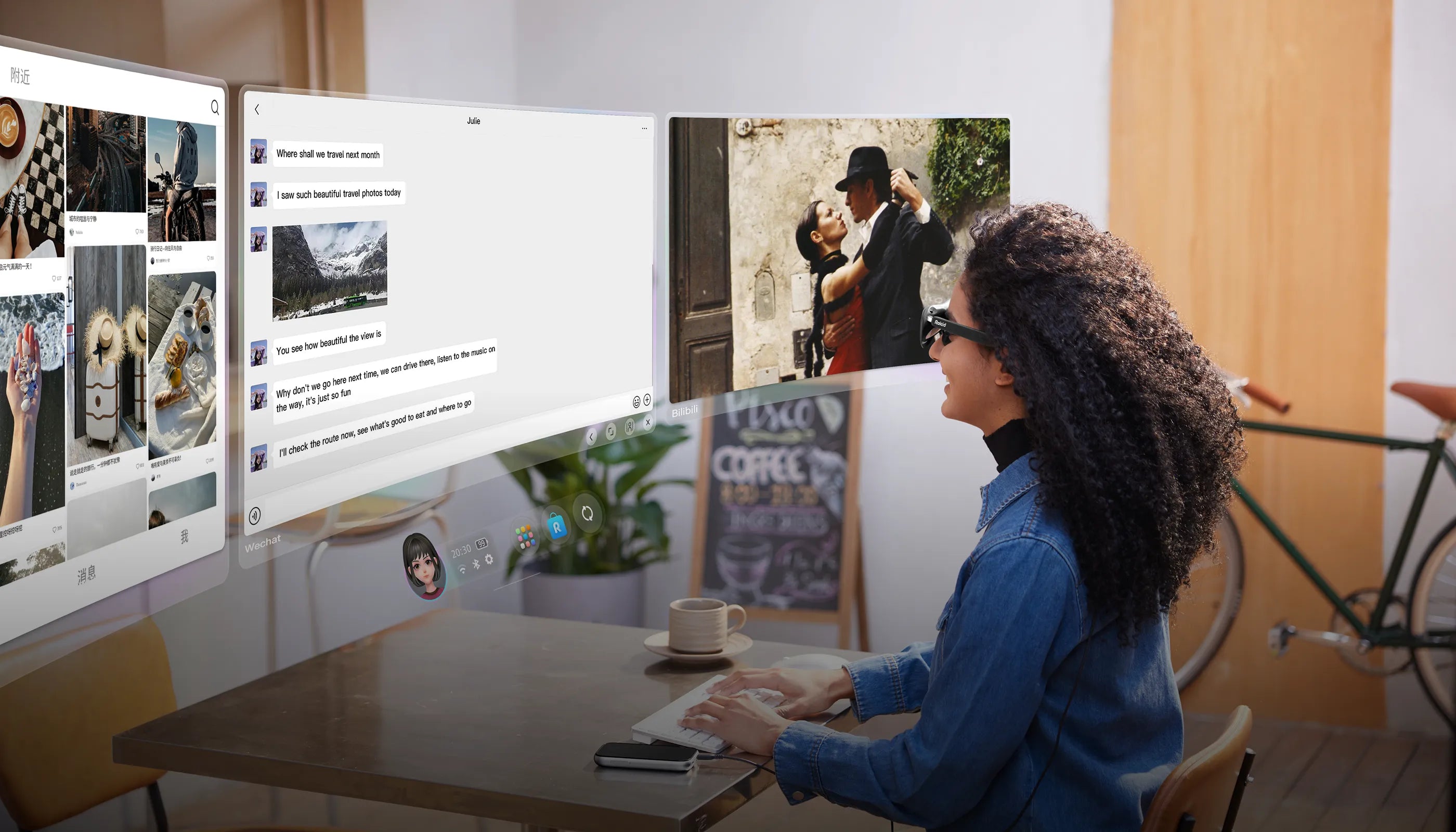
Imagine a world where digital information seamlessly overlays your physical surroundings, enhancing your everyday experiences and revolutionizing various industries. This is the promise of augmented reality (AR) smart glasses, and it's no longer science fiction. These innovative devices are rapidly evolving, blurring the lines between the physical and digital realms and offering endless possibilities for the future.
I. Introduction to Augmented Reality Smart Glasses
Defining Augmented Reality (AR):
AR differs from virtual reality (VR) by augmenting our existing perception of the world, instead of replacing it entirely. AR glasses superimpose digital elements onto our real-world view, such as directions, notifications, or even fantastical creatures. Think of it as a transparent digital window enriching your vision with valuable information and interactive experiences.
Evolution of Smart Glasses:
The concept of wearable computing isn't new, but advancements in display technology, miniaturization, and processing power have paved the way for sophisticated AR glasses. Early iterations were bulky and clunky, often relegated to niche industrial applications. However, recent years have witnessed a surge in sleek, consumer-friendly AR glasses like Rokid's TV glasses and augmented reality glasses, making them accessible to a wider audience.

II. How Augmented Reality Smart Glasses Work
Basic Components and Technology:
AR smart glasses consist of several key components:
- Head-mounted display (HMD): Projects digital information onto the user's field of view, often utilizing micro-LED or OLED technology.
- Sensors: Capture data about the environment, including depth, movement, and spatial mapping, to accurately position and anchor digital elements.
- Processing unit: Analyzes sensor data and renders the AR experience in real-time.
- User interface (UI): Allows users to interact with the digital content through gestures, voice commands, or eye tracking.
AR Visualization Process:
1. Sensors: Capture 3D data of the surroundings.
2. Processing unit: Analyzes the data and identifies key points and surfaces.
3. HMD: Projects digital elements onto these real-world surfaces, creating the AR experience.
III. Key Features of AR Smart Glasses
Display and Image Quality:
A crucial aspect of AR glasses is the display technology. High-resolution micro-LED or OLED displays offer vibrant colors, sharp text, and a comfortable viewing experience, even in bright environments. Rokid's augmented reality glasses, for example, boast a stunning 1080p display with a wide field of view for immersive AR experiences.
User Interface and Control Methods:
Intuitive and seamless interaction is paramount. Touchpad controls, voice commands, and even eye tracking allow users to navigate menus, manipulate objects, and interact with the AR content effortlessly.

IV. Augmented Reality Smart Glasses in Everyday Life
Consumer Applications:
AR smart glasses are transforming everyday activities. Imagine navigating your city hands-free with real-time directions overlaid on your vision, or translating foreign languages on the fly. You can even browse recipes while cooking, having step-by-step instructions projected right onto your kitchen counter.
Lifestyle Enhancements with AR Glasses:
Beyond practical applications, AR heads-up display glasses enhance leisure activities. Imagine watching movies or playing games on a virtual cinema screen wherever you go, or attending virtual concerts and events from the comfort of your living room.
V. Augmented Reality Smart Glasses in Business and Industry
AR in Manufacturing and Logistics:
AR is revolutionizing industries like manufacturing and logistics. Technicians can receive real-time instructions and overlay maintenance schematics onto machinery, streamlining repair processes. Warehouse workers can pick and pack orders with augmented guidance, significantly improving efficiency and accuracy.
AR for Training and Education:
AR provides immersive training experiences for various professions. Surgeons can rehearse complex procedures on virtual models, pilots can navigate simulated flight scenarios, and firefighters can train for emergency situations in augmented environments.

VI. Leading Brands and Models in AR Smart Glasses
Market Leaders and Innovators:
Several companies are vying for dominance in the AR smart glasses market. Brands like Rokid, Microsoft (with their HoloLens 2), and Vuzix are leading the charge with innovative models designed for consumer, enterprise, and industrial applications.
Comparison of Popular Models:
|

VII. The Future of Augmented Reality Smart Glasses
Emerging Trends and Future Developments:
The future of AR smart glasses is brimming with possibilities. Key trends include:
- Miniaturization and increased processing power: AR glasses will become even lighter, sleeker, and more powerful, offering seamless integration into our daily lives.
- Advanced sensors and spatial mapping: LiDAR and other advanced sensors will enable more precise environment tracking and interaction with digital objects.
- Improved user interfaces and natural language processing (NLP): Brain-computer interfaces and intuitive voice commands will revolutionize how we interact with AR, making it seamless and effortless.
- Integration with the Internet of Things (IoT): AR glasses will connect seamlessly with smart devices, creating a truly interconnected and immersive experience.
Predictions for AR in the Next Decade:
In the next decade, we can expect AR smart glasses to become ubiquitous. They will likely:
- Transform the way we work and learn: AR will empower remote collaboration, enhance training experiences, and personalize education.
- Revolutionize how we shop and interact with businesses: Imagine trying on clothes virtually, or receiving personalized product recommendations overlaid on real-world displays.
- Blur the lines between entertainment and reality: AR will immerse us in virtual worlds, enhance live events, and redefine storytelling.
VIII. Design and Aesthetics of AR Smart Glasses
Ergonomics and Wearability:
As AR glasses become part of our daily lives, comfort and style become crucial. Manufacturers are focusing on lightweight, ergonomic designs that minimize eye strain and ensure all-day wearability. Rokid's TV glasses, for example, feature a stylish and comfortable design perfect for everyday use.
Style Versus Functionality:
Finding the balance between functionality and aesthetics is key. AR glasses should not only be technologically advanced but also look sleek and complement the user's style. Manufacturers are collaborating with fashion designers to create AR glasses that are both functional and fashionable.

IX. Privacy and Security Concerns with AR Smart Glasses
Data Security and User Privacy:
With AR glasses capturing and collecting data about our surroundings, privacy concerns are inevitable. Robust security measures and transparent data usage policies are crucial to ensure user trust and ethical development of AR technology.
Addressing Privacy Challenges:
Companies like Rokid are prioritizing user privacy. Their AR glasses incorporate advanced security features and anonymize data collection, putting user control and transparency at the forefront.
X. Augmented Reality Smart Glasses for Gaming and Entertainment
Gaming Experiences Enhanced by AR:
Imagine exploring fantastical worlds overlaid on your own environment, or battling virtual creatures amidst your living room. AR is poised to revolutionize gaming, blurring the lines between reality and virtual worlds.
AR in Film and Interactive Media:
AR can personalize storytelling, allowing viewers to interact with movies and shows, or even become part of the narrative themselves. Imagine exploring fictional worlds beyond the screen, or interacting with characters in real-time.

XI. Health and Safety Implications of AR Smart Glasses
Eye Health and Ergonomics:
Prolonged use of AR glasses raises concerns about eye strain and potential impacts on vision. Manufacturers are focusing on developing eye-friendly displays and promoting responsible usage practices.
Safe Usage Guidelines:
It's essential to use AR glasses responsibly, being mindful of surroundings and avoiding distractions while walking or driving. Responsible development and usage guidelines are crucial to ensure the safety of both users and the public.
XII. Integration of AR Smart Glasses with Other Technologies
Compatibility with Smartphones and IoT:
AR glasses will seamlessly connect with smartphones and other smart devices, creating a unified ecosystem for a truly interconnected experience. Imagine controlling your smart home appliances or accessing information from your phone directly through your AR glasses.
Synergies with VR and Other Immersive Tech:
The lines between AR and VR will continue to blur, with hybrid technologies offering immersive experiences that blend the physical and digital realms. VR headsets can complement AR glasses for specific tasks, such as virtual training simulations or deep-dive entertainment experiences.
XIII. The Role of Augmented Reality Smart Glasses in Education
Interactive Learning and AR:
AR can revolutionize education by making learning interactive and engaging. Imagine exploring historical events in augmented reality, dissecting virtual models in biology class, or practicing complex skills in a simulated environment.
Case Studies in Educational AR:
Companies like Rokid are partnering with educational institutions to develop AR learning experiences. Rokid's AR glasses are being used in classrooms to bring concepts to life, foster student engagement, and personalize the learning process.
XIV. The Economic Impact of AR Smart Glasses
Market Growth and Investment:
The AR smart glasses market is projected to experience explosive growth in the coming years, attracting significant investments from leading tech companies.
XV. AR Smart Glasses in Healthcare and Medicine
Applications in Surgery and Diagnosis:
AR has the potential to revolutionize healthcare. Surgeons can visualize patient anatomy through overlaid diagrams, guiding them during delicate procedures with increased precision. Doctors can access patient data and medical imaging in real-time, improving diagnosis and treatment decisions.
Telemedicine and Patient Care:
AR enables remote consultations and medical assistance, bridging the gap between patients and healthcare professionals. Specialists can remotely guide medical staff on procedures, or even provide virtual consultations to patients in remote areas.
XVI. Environmental Considerations and Sustainability in AR Smart Glasses
Energy Efficiency and Materials:
As a responsible technology, AR development should prioritize environmental sustainability. Manufacturers are focusing on energy-efficient components and utilizing recycled materials to minimize the environmental footprint of AR glasses.
Sustainable Manufacturing Practices:
Implementing sustainable manufacturing practices throughout the lifecycle of AR devices, from resource extraction to end-of-life recycling, is crucial to minimize environmental impact.
XVII. Legal and Ethical Aspects of AR Smart Glasses
Regulatory Landscape:
The legal framework surrounding AR is still evolving, raising questions about data privacy, intellectual property, and responsible usage in public spaces. Clear regulations and ethical guidelines are needed to ensure responsible development and deployment of AR technology.
Ethical Implications and Debates:
There are ongoing debates surrounding the ethical implications of AR, such as the potential for social inequalities, data exploitation, and manipulation of perception. Open discussions and ethical considerations are crucial to ensure responsible development and use of AR.
XVIII. Augmented Reality Smart Glasses: A Comprehensive Overview
AR smart glasses are not just a futuristic fad; they represent a transformative technology with the potential to reshape the way we live, work, and interact with the world around us. From enhancing everyday experiences to revolutionizing industries like healthcare and education, AR is poised to become an integral part of our lives.
The Future Vision of AR Technology:
The future of AR is boundless. Imagine a world where information seamlessly blends with the physical environment, empowering us to learn, collaborate, and experience the world in entirely new ways. With responsible development and ethical considerations, AR has the potential to create a future that is not only technologically advanced but also more informed, interconnected, and enriching for all.
Frequently Asked Questions about AR Smart Glasses:
1. What are the health risks of using AR glasses?
Eye strain is a potential concern, but manufacturers are developing eye-friendly displays and promoting responsible usage practices.
2. How much do AR glasses cost?
Prices vary depending on features and models, but are becoming increasingly affordable with the expanding market.
3. Are AR glasses safe to use while driving?
No, using AR glasses while driving is not recommended due to potential distractions.
4. Do AR glasses require a smartphone?
Some models rely on a smartphone connection, while others function independently.
Conclusion:
The world of augmented reality is brimming with possibilities, and AR smart glasses are the key to unlocking them. As the technology continues to evolve and become more accessible, we can expect AR to weave itself into the fabric of our daily lives, enriching our experiences and transforming the way we interact with the world around us. So, get ready to see the world through a new lens, as the future of reality is augmented.



